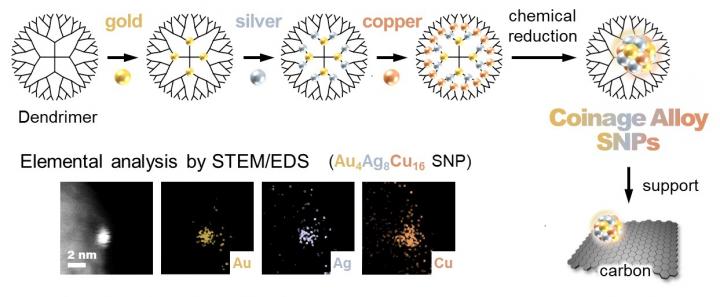[ad_1]
AsianScientist (Dec. 9, 2020) – Proving that the best things come in small packages, scientists from the Tokyo Institute of Technology have developed a novel method to produce exceedingly tiny materials with unprecedented properties. Their study was published in the Journal of the American Chemical Society.
As the old adage goes, the bigger the better. In the world of quantum materials, however, the opposite holds true. The smaller materials are, the more unusual their characteristics become.
When these particles become smaller—around the size of 1 nanometer—exotic quantum phenomena start to emerge. One such example of quantum phenomena is entanglement, famously described by Einstein as “spooky action at a distance.” In entanglement, two particles are able to instantly affect each other’s behaviors even across great distances.
These extremely small particles, called sub-nanoparticles (SNPs), are now considered a new class of materials with distinct properties. However, creating these SNPs has historically been plagued by technical difficulties, particularly for particles containing multiple elements.
“Even SNPs containing just two different elements have barely been investigated because producing a system of subnanometer scale requires fine control of the composition ratio and particle size with atomic precision,” said study first author Dr. Takamasa Tsukamoto.
In a bid to finally achieve precise control over SNP synthesis, Tsukamoto and his colleagues developed a new technique based on dendrimers—symmetric molecules with branches that almost resemble snowflakes. By depositing metal salts onto the dendrimer branches and then subjecting the set-up to chemical reduction and oxidation, the researchers were able to precisely synthesize SNPs on the dendrimers.

Through their technique, the team managed to produce SNPs with various ratios of indium and tin oxides. Analyzing the properties of these SNPs, they found that the unusual properties emerged at an indium-to-tin ratio of 3:4. For example, SNPs with this ratio were yellow instead of the usual white and glowed green under ultraviolet light.
According to the authors, further exploring the material properties of these SNPs will likely lead to their application in next-generation electronics and catalysts. Still, their study is just the beginning.
“Our study marks the first-ever discovery of unique functions in SNPs and their underlying principles through a sequential screening search,” noted Tsukamoto. “We believe our findings will serve as the initial step toward the development of as-yet-unknown quantum sized materials.”
The article can be found at: Tsukamoto et al. (2020) Quantum Materials Exploration by Sequential Screening Technique of Heteroatomicity.
———
Source: Tokyo Institute of Technology; Photo: Shutterstock.
Disclaimer: This article does not necessarily reflect the views of AsianScientist or its staff.
[ad_2]
Source link